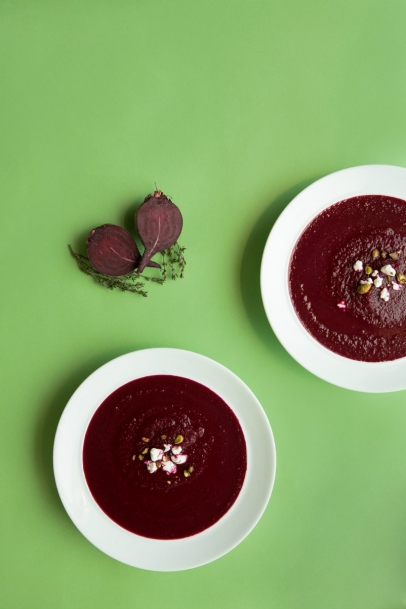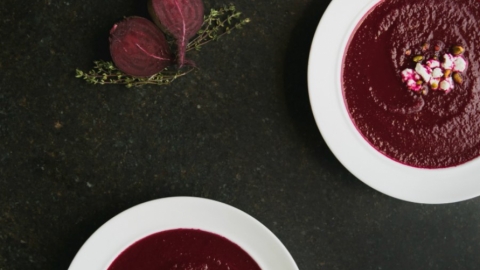Soup's On!
The advent of winter, with its falling snow and bone-chilling temperatures, naturally elicits a desire to fill our tummies with something warm and comforting. For me, one of winter’s fondest childhood memories is coming in from the biting cold to be greeted by a steaming bowl of delectable soup. Watching the tendrils of steam gently rise and curl made my mouth water in happy anticipation of the first delicious spoonful. Soup not only warmed my innards back then but still does today. Whether you are cold, feeling sick, or just plain hungry, a bowl of savory soup is a magic elixir that just seems to make life a little bit brighter and warmer.
In today’s world, the old standards of canned tomato, vegetable, and chicken noodle soups have now been joined by those freshly made with seasonal offerings such as apple-butternut squash, creamy braising greens, or maple roasted beet soup with fresh goat cheese and pistachios. Many folks in this day and age have a strong commitment to eating healthy, driven by a desire to know where their food comes from and how it is grown and prepared. Consumers are more food savvy, loyally supporting their local food community and the products that it produces.
Those who study the history of food tell us that soup goes back to the early beginnings of cooking. Because it was so easy to make, soup was the perfect choice for both traveling cultures and those who remained in one place, as well as the rich and poor, healthy and sick. “Portable” soups were eaten by soldiers, explorers and travelers for hundreds of years. These were made by boiling seasoned meat until a thick syrup-like substance was left that could be dried and stored for months. Our dry soups of today, which were introduced in the 1930s, are descended from these. The evolution of different varieties of soup was determined by local ingredients and tastes. Good examples include New England clam chowder, Spanish gazpacho, Russian borscht, Italian minestrone, French onion, Chinese wonton soup and Portuguese kale.
The modern word “soup” is derived from “sop” or “sup” meaning the slice of bread on which the broth was poured. In the Middle Ages, soup consisted of a piece of bread soaked in a liquid, or over which the liquid had been poured. Bread was a necessary part of the dish because it sopped up the liquid, taking the place of our modern day spoon. Those who are expert in etiquette tell us that we should eat, not drink, our soup as it is considered to be part of the meal.
Commercially made soups became popular with the invention of canning in the 19th century. Doctor John T. Dorrance, a chemist who worked for the Campbell Soup Company, invented condensed soup in 1897. Today, three of the most popular varieties of Campbell’s soups are Tomato, Cream of Mushroom and Chicken Noodle. Advances in science have given us many forms of soup besides canned and dehydrated; consumers may now purchase microwavable soups or varieties that offer low salt and high fiber.
Due to its popularity, soup has found a place in our English language as well. For example:
ALPHABET SOUP—meaning a large number of acronyms used by administration
IN THE SOUP—being in a bad situation
SOUP KITCHEN—a place that prepares food for those in need
STONE SOUP—a folk tale and popular children’s book written by Marcia Brown
SOUP TO NUTS—meaning from beginning to end
Soup has found a lasting place in our culture, both in our kitchens and language. Using a wide variety of locally grown produce, we are drawing our families back to the table with an exciting array of delicious, healthy soups. In an age where eating together as a family unit is rapidly becoming a thing of the past, wouldn’t it be wonderful if the warmth of a mouthwatering bowl of soup made the dinner table a gathering place once more?
Tracey Medeiros keeps it local and seasonal in her kitchen.






